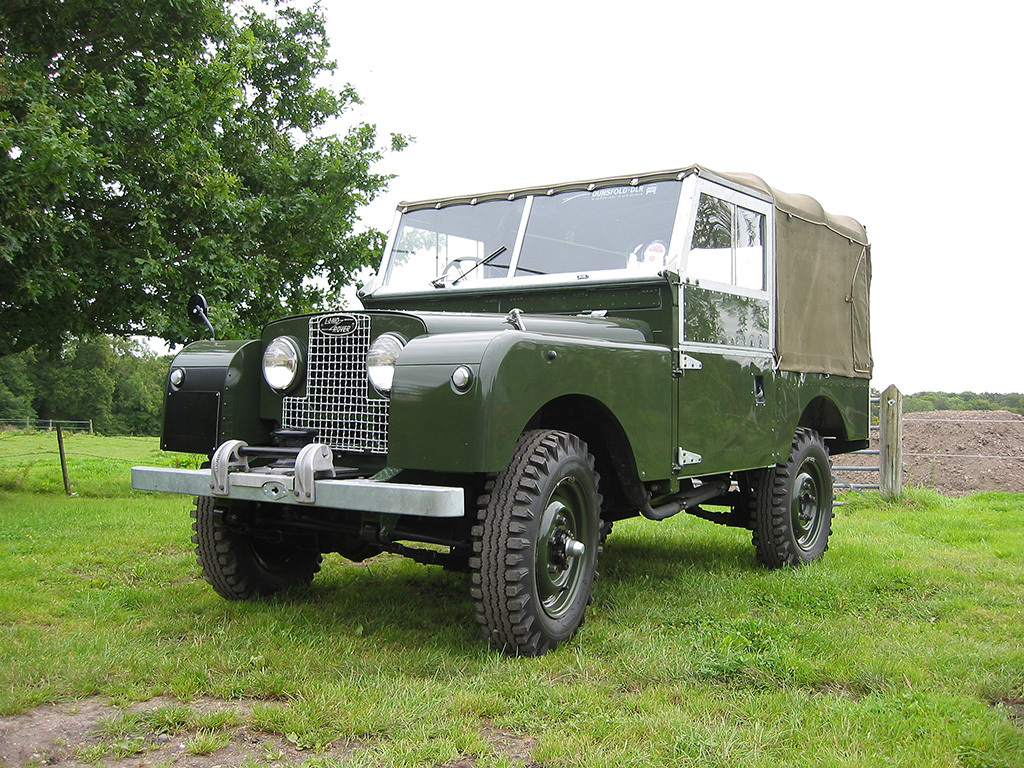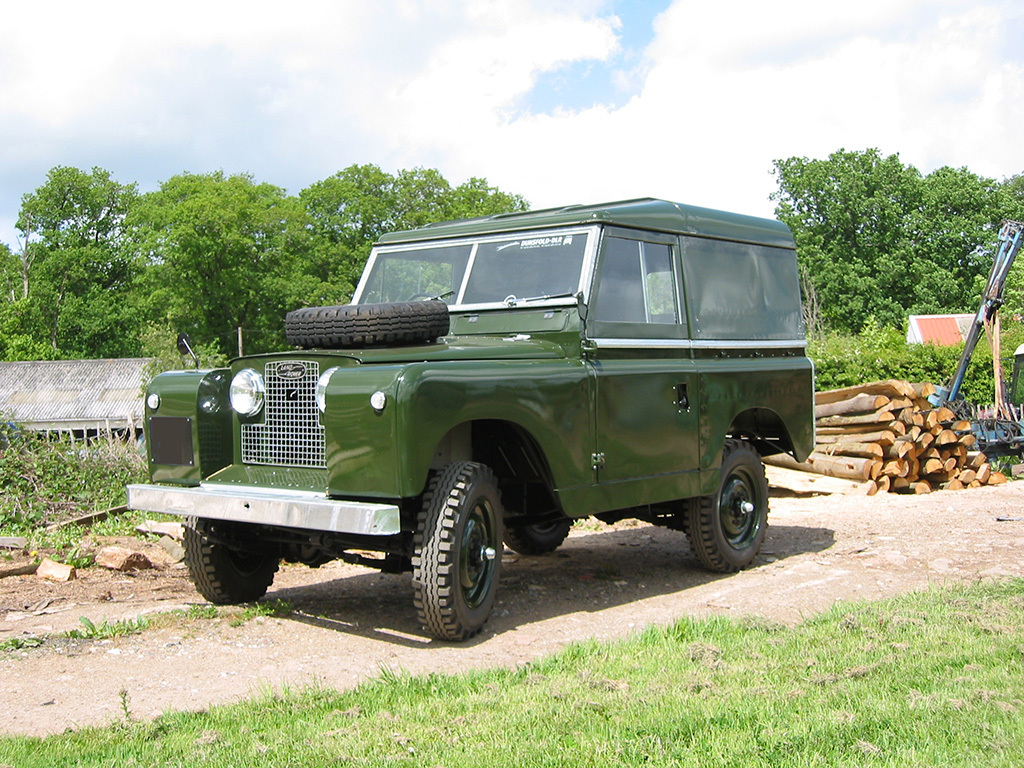
Land Rover Series: Understanding the Basics for New Enthusiasts
Important Disclaimer: Whilst we take every care to ensure that our website and information herein is as accurate as possible, errors and omissions are excepted. Please tell us if you think something is wrong.
Stepping into the world of Series Land Rover ownership is embarking on a journey that connects you with automotive history, engineering simplicity and a global community of passionate enthusiasts. Whether you've just acquired your first Landrover Series or you're considering joining the ranks of Series owners, understanding these remarkable vehicles is essential for a rewarding ownership experience.
The Evolution of an Icon
The Series Land Rover story began in 1948 when the Rover Company needed a stopgap vehicle to boost post-war production. What started as a temporary measure became one of the most successful and influential vehicle designs in automotive history. The original Series 1 pioneered the concept of a versatile, go-anywhere vehicle that could serve equally well on farm, expedition or military service.
Understanding the evolution from Series 1 through to Series 3 helps new enthusiasts appreciate the incremental improvements and identify their vehicle correctly. Each iteration of the Landrover Series brought refinements while maintaining the core philosophy of simplicity, durability and capability that defines these vehicles.
Identifying Your Series Land Rover

Series 1 (1948-1958)
The earliest Series Land Rover models are instantly recognisable by their distinctive features. The original 80-inch wheelbase models featured a simple, functional design with inset headlights in the early years, moving to a more familiar wing-mounted position from 1952. These pioneering vehicles established the DNA that would define Land Rover for decades.
Key identifying features include the central-mounted spare wheel on early models, simple pressed steel grille and minimal creature comforts. If you're looking at Series 1 parts and components, understanding these unique characteristics is crucial for correct part identification.
Series 2 and 2A (1958-1971)
The Series 2 marked a significant evolution in the Landrover Series lineage. The most obvious change was the wider track and improved body proportions. The Series 2A, introduced in 1961, brought further refinements, including a new diesel engine option and improved electrical systems.
These models introduced the now-iconic barrel-side body design and featured improved driver comfort with better seating and dashboard layout. The transition from Series 2 to 2A brought subtle but important changes that affect parts compatibility, making it essential to identify your specific model correctly.
Series 3 (1971-1985)
The final iteration of the Series Land Rover represented the pinnacle of the traditional design before the transition to the Defender. The Series 3 introduced a synchromesh gearbox, an improved dashboard with modern switchgear, and the distinctive plastic grille that helps identify these models at a glance.
For new enthusiasts sourcing Series 3 components and spares, understanding these updates is vital as many parts are not interchangeable with earlier models despite the similar appearance.
https://rimmerbros.com/FileLibrary/land-rover-series-3.JPG
Essential Maintenance Knowledge
Engine Types and Characteristics
Understanding your Landrover Series engine is fundamental to proper maintenance. The range included various petrol and diesel options throughout production.
- Petrol engines: From the original 1.6-litre through to the 2.25-litre units, these engines are known for their smooth running and relative simplicity
- Diesel engines: Starting with the 2-litre in Series 2 and evolving to the 2.25-litre diesel, these units prioritise economy and torque over outright power
Each engine type has specific maintenance requirements and common issues that new owners should understand. Regular oil changes, valve adjustments and cooling system maintenance are critical for longevity.
Chassis and Running Gear
The ladder-frame chassis is the backbone of every Series Land Rover, and understanding its maintenance needs is crucial. Regular inspection for corrosion, particularly at known weak points like the rear crossmember and spring hangers, can prevent costly repairs later.
The leaf spring suspension system, while simple and robust, requires periodic attention. Checking spring bushes, U-bolts and shackle pins should be part of your regular maintenance routine. When sourcing quality replacement parts from trusted suppliers, ensuring correct fitment for your specific Series model is essential.
Electrical Systems
The electrical systems in Landrover Series vehicles evolved significantly throughout production. Early models featured 12-volt positive earth systems, while later vehicles adopted negative earth configurations. Understanding your vehicle's electrical system is crucial when troubleshooting issues or upgrading components.
Common electrical maintenance includes:
- Checking and cleaning earth connections
- Maintaining the dynamo or alternator
- Ensuring proper battery care
- Inspecting wiring for deterioration
Body and Interior Considerations
Aluminum Body Care
One of the defining features of the Series Land Rover is its aluminum body panels. While resistant to rust, aluminum presents its own maintenance challenges. Understanding how to work with aluminum, including proper repair techniques and the importance of avoiding galvanic corrosion when in contact with steel, is essential for maintaining your vehicle's bodywork.
Regular inspection of panel fixings, door hinges and the bulkhead (which is steel and prone to corrosion) helps maintain structural integrity. The modular construction makes panel replacement relatively straightforward, though sourcing correct panels for your specific model requires careful identification.
Interior Restoration and Maintenance
The utilitarian interior of a Landrover Series reflects its working vehicle origins. However, maintaining or restoring the interior enhances both comfort and value. Original seat frames often survive well, but foam and covers typically need replacement. Understanding the correct specifications for your model year ensures authentic restoration.
Dashboard components, instruments and switchgear vary significantly between models and years. When planning interior work, having access to comprehensive parts resources and technical information helps ensure correct component selection.
Common Issues and Solutions
Oil Leaks and Seepage
Almost every Series Land Rover owner will joke about oil leaks being a 'feature' rather than a fault. While some oil seepage is common with older vehicles, understanding the difference between acceptable weepage and problematic leaks is important. Common sources include:
- Gearbox and transfer case seals
- Engine sump and timing cover
- Axle hubs and differentials
- Steering box
Regular inspection and timely seal replacement prevent minor leaks from becoming major problems.
Steering and Handling
The steering characteristics of a Landrover Series can surprise newcomers accustomed to modern vehicles. The steering box design requires regular adjustment and lubrication to maintain acceptable free play. Understanding the adjustment procedure and recognising when professional attention is needed helps maintain safe handling.
Worn steering components, including track rod ends, steering relay and ball joints, significantly affect handling. Regular inspection and timely replacement of worn parts ensures your vehicle remains safe and enjoyable to drive.
Parts Sourcing and Authenticity
Finding Quality Parts
Sourcing parts for your Series Land Rover requires understanding the balance between authenticity, quality and availability. Original parts are increasingly rare, but quality reproduction and OEM-specification components are readily available from specialist suppliers.
When selecting parts, consider:
- The importance of authenticity for your specific vehicle
- Quality versus cost considerations
- Availability of upgraded components that improve reliability
- Compatibility between different Series models
Building Your Maintenance Toolkit
Essential Tools
Working on a Landrover Series requires some specific tools alongside standard mechanical equipment:
- Imperial spanners and sockets (especially for earlier models)
- Whitworth tools for the oldest components
- Hub pullers and bearing tools
- Oil filter wrench specific to your engine type
- Grease gun for regular lubrication of universal joints
Workshop Manuals and Resources
Investing in quality workshop manuals specific to your Series Land Rover model provides invaluable guidance. Original factory manuals offer the most comprehensive information, while modern reproductions and restoration guides provide additional insights from decades of collective experience.
Joining the Community
Clubs and Forums
The Landrover Series community is one of the most active and supportive in the classic vehicle world. Local clubs offer technical support, social events and access to collective knowledge that proves invaluable for new owners. Online forums provide instant access to expertise from enthusiasts worldwide, helping solve problems and share experiences.
Events and Gatherings
Attending Land Rover shows and gatherings provides opportunities to see other vehicles, compare restoration approaches and source parts from specialist vendors. These events offer invaluable learning experiences for understanding the variations within the Series range and meeting experienced owners willing to share knowledge.
Planning Your Journey
Setting Realistic Goals
Whether maintaining a working vehicle or undertaking a restoration, setting realistic goals helps ensure enjoyable ownership. Understanding that these vehicles require regular attention and that perfection isn't always the goal helps maintain perspective. Many owners find that the mechanical simplicity and hands-on maintenance become part of the enjoyment.
Budgeting for Ownership
Understanding the true costs of Series Land Rover ownership helps avoid surprises. Beyond purchase price, consider:
- Regular maintenance consumables
- Insurance and storage costs
- Tool and equipment investment
- Parts availability and pricing
- Potential restoration requirements
The Rewarding Path Ahead
Owning a Landrover Series connects you with a remarkable piece of automotive history. These vehicles offer a driving experience unlike modern alternatives, combining mechanical simplicity with genuine capability. Understanding the basics covered in this guide provides the foundation for years of enjoyable ownership.
The journey from new enthusiast to experienced Series Land Rover owner is filled with learning opportunities, challenges and rewards. With proper understanding, regular maintenance, and support from the enthusiastic community, your Series Land Rover will provide decades of reliable service and countless adventures.
Remember that every experienced Series owner started where you are now. The combination of mechanical simplicity, parts availability from specialists like Rimmer Bros, and strong community support makes Series Land Rover ownership accessible and rewarding for enthusiasts at any skill level.